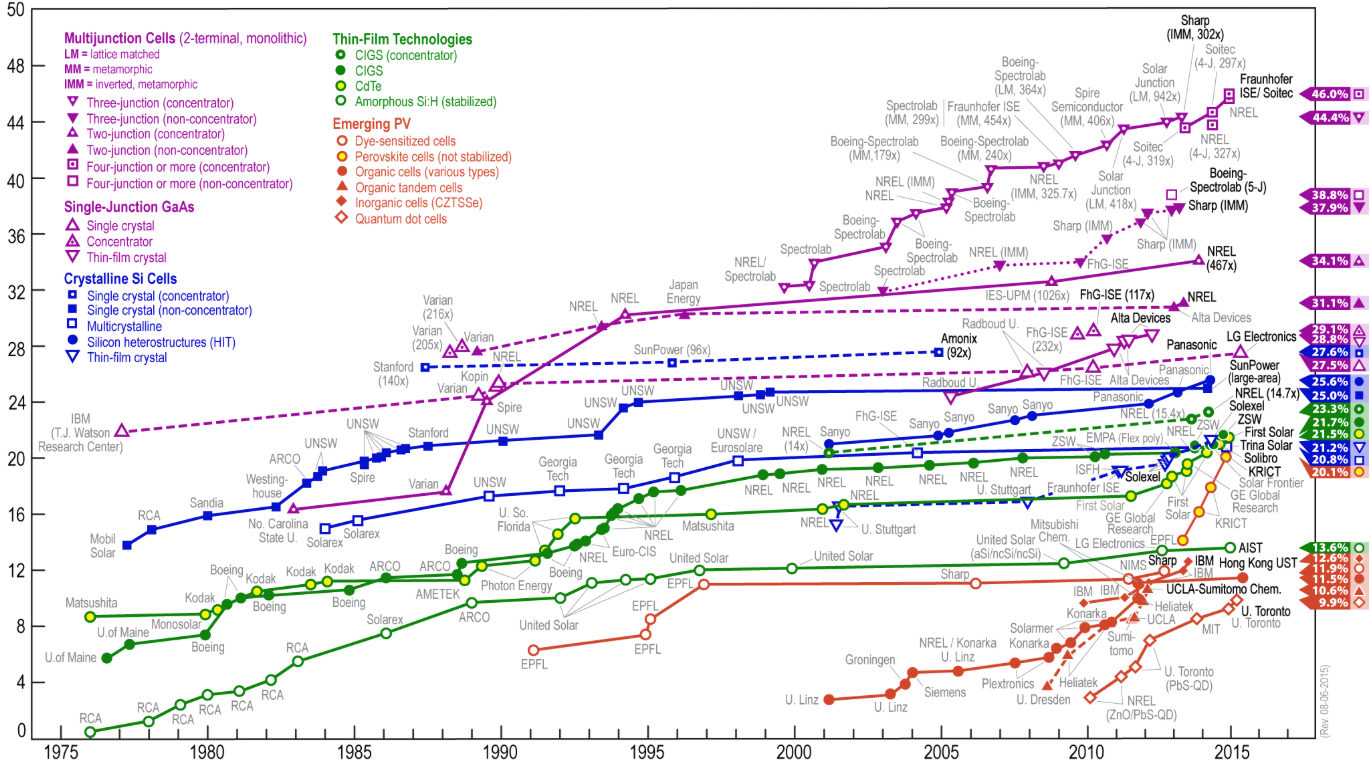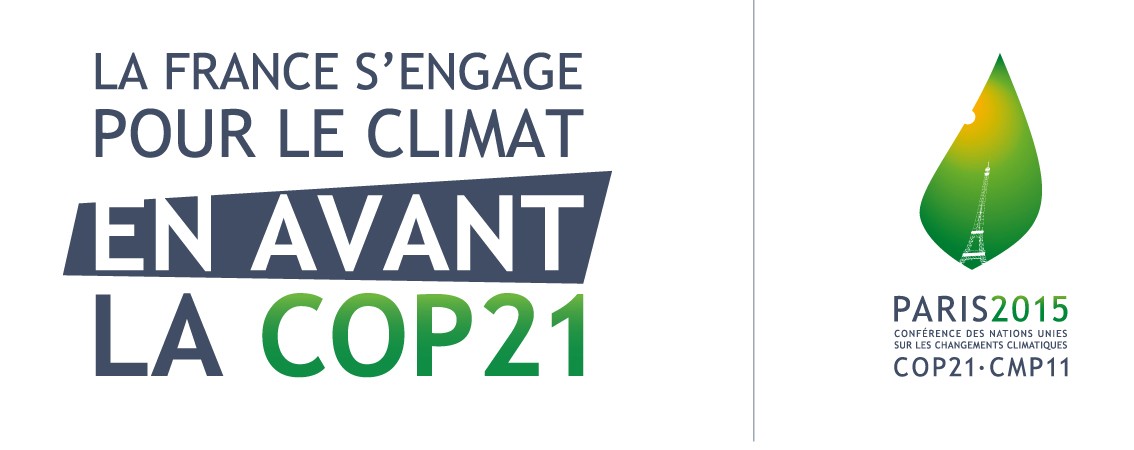Mass wind and solar? They’re 25 years away
 First published by spiked, December 2015
First published by spiked, December 2015After COP21, the Paris conference on climate change, it’s time to puncture Green euphoria about renewable energy
Among Greens, technological innovation is the New Black. After all, dissing the plebs for their ignorant and greedy behaviour with energy hasn’t proved very popular, even if environmentalism still likes to do that. Similarly, protesting coal-fired power stations in Asia has cut little ice. So now environmentalists have conveniently discovered that technological innovation in wind and solar power will rapidly supply much of the world’s electricity.
Since 2008, the US has wanted wind power to drive a fifth of the electricity generated in 2030, up from 4.5 per cent today. Likewise presidential hopeful Hillary Clinton envisages America as the ‘clean energy superpower’, one where renewables generate ‘at least a third’ of electricity as early as 2027. Now the Paris Agreement upholds what it calls ‘universal access to sustainable energy in developing countries, in particular in Africa, through the enhanced deployment of renewable energy’. Indeed, at Paris US Secretary of State John Kerry proclaimed ‘clean’ energy to be ‘cheaper against today’s alternatives’.
Is any of this credible? No. Capitalism is in no shape to make renewable electricity supplant the conventional sort within the next 15 years.
The dishonesty that surrounds Green tech
During COP21, the US, much of Europe, China, India and several other major nations launched Mission Innovation, aimed at doubling R&D into renewables by 2020. Significantly, Bill Gates and other billionaire investors joined the mission. For Gates, this intrepid group of ‘patient’ capitalists has a philanthropic goal: it is ‘as much to accelerate innovation as it is to turn a profit’. Gates hopes that, over at least a decade, photovoltaic panels might morph into ‘solar paint’; rechargeable electrolyte in batteries, or ‘flow batteries’, might beat the lithium-ion sort; and sunshine might help make hydrogen and hydrocarbons in a process he abbreviates as ‘solar chemical’.
If Gates properly believes that renewables need big improvements in clout and cost, Kerry imagines they’re already profitable – even without the subsidies they bask in. As he told COP21, renewables today are ‘one of the greatest economic opportunities the world has ever known’, and capitalists can now ‘do well and do good at the same time’. To complete the euphoria at Paris about renewables, solar power in developing countries enjoyed special support. Thus, on top of Mission Innovation, a second key initiative emerged alongside COP21. Launched by India and France, the International Solar Alliance brings together ‘around 120’ tropical nations to attract $1000 billion of investment in solar by 2030. The aim: to cheapen existing solar technologies, but also develop new ones ‘tailored to the specific needs of members of the Alliance’.
What dishonesty surrounds Green tech! Today, ‘tailoring’ solar to the reputed needs of developing countries won’t build them the kind of electricity capacity that can continuously power ‘factories, skyscrapers, and other large consumers of energy’, as Bill Gates rightly observes is necessary. Drawn up by international elites and the United Nations, the official programme for developing countries in solar is paltry by comparison: it is to give the rural poor ‘access’ to electricity that’s ‘decentralised whenever possible and based on clean energy’.
As ever, climate negotiations form a diplomatic charade that only reveals the West’s grimy conception of how the developing world should develop – with just enough low-tech, low-output Green Electricity Lite to power a village hut, no more.
The idea that solar panels have now reached ‘grid parity’, or price equivalence with fossil fuel-powered electricity, is a second charade. The efficiency with which solar and wind harness diffuse natural forces to make electricity remains way below the efficiency notched up by conventional power plants – especially gas:
Efficiency of power generators, by conventional energy source, per cent, 2013
Coal 32.6
Nuclear 32.6
Gas 42.9
Source: US Energy Information Administration
Conversion efficiencies of noncombustible sources of renewable energy, per cent
Solar photovoltaic 12
Geothermal 16
Solar thermal power 21
Wind 26
Conventional hydroelectric 90
Source: US Energy Information Administration
Well: haven’t solar efficiencies improved? Yes, but mostly over decades – and that’s in laboratories, not the more arduous conditions of everyday use:
Improvements in the efficiency of solar cells tested in labs, per cent, 1976-2015

Source: National Renewable Energy Laboratory, US
The economies of scale and subsidies enjoyed by Chinese manufacturers of solar panels have bankrupted their rivals and lowered prices. Yet with improvements in efficiency so slow, panels will go on occupying a lot of land, or roof space, for years and years. That will keep their installed costs buoyant, as well as counteract the falling costs of installation, maintenance and financing that US solar services firms have recently achieved.
As Gates’ proposal for solar paint suggests, the building and especially the home, not the expansive ‘farm’ of panels, remain the principal units of account for solar power. Yet how can household panels, still less those mounted atop blocks of flats, provide enough reliable energy efficiently to power fleets of computer servers and trains, still less the processes involving heat that are at the core of making steel and cement? Solar can never be an easily concentrated, continuous source of baseload power in the way that fossil fuel fired and nuclear power stations can be. Every spurious exaggeration of solar power’s capabilities in developing countries consigns them to stunted development – to intermittent, weak electricity.
Perhaps better battery storage of energy – including flow batteries – offers hope. Yet here too illusions are enormous. Storage will add to the costs of wind and solar. Moreover, even the breakthrough lithium-air battery just announced by Dr Clare Grey at Cambridge University will require at least a decade to be commercialised.
Conclusion
One of the chief dangers emerging from CO21 is that the mirage of renewables saving the planet, along the lines of Germany’s disastrous, nuclear-free ‘energy transformation’, will now be consolidated into widespread prejudice.
Now of course, no silver bullet will do everything in energy supply; so, for all their depressing intermittency, wind and solar power deserve in principle the kind of large and long-term R&D budgets that fossil fuels and nuclear power ought to enjoy. But in fact R&D expenditures by the West on renewables are, like those on fossil fuels and nuclear, utterly negligible:
The insignificance of R&D budgets for all kinds of energy: spending on energy R&D, $bn, 2014
US and Canada Europe
Renewables 1.08 1.52
Energy efficiency 1.36 1.82
Fossil fuels 0.8 0.57
Nuclear 0.97 1.34
Source: International Energy Agency
Yes, on a good day wind turbines can now generate a lot of a country’s electricity; yes, the price of solar electricity is now going down, and yes, innovation always needs to think about the long term. But in the case of renewables, reliably generating a quarter of the world’s electricity at prices that compare well with fossil and nuclear will have to await 2040 or later, not 2030. Even then renewables will still need a lot of fossil-fuel backup to assure continuous electricity generation.
Governments, and perhaps now philanthropically minded capitalists, may nudge the ‘creative’ side of Joseph Schumpeter’s ‘creative destruction’ of the fossil fuel and nuclear industries. Yet the preference in renewables has been for subsidising yesterday’s technologies more than spending on tomorrow’s R&D. So despite all the self-loathing of the fossil fuel and nuclear industries, and despite the relative lack of profitability of nuclear, renewables will not wreak destruction on them for a long time to come.
There is simply not the investment being made in new industries to eradicate the old, because capitalism is barely interested in general investment and innovation – let alone that in energy, where the installed base of and sunk costs of fossil fuel infrastructure can only be overcome over decades.
Kerry can claim that ‘over the next 15 years, $17 trillion is expected to be invested in energy, and the vast majority of that is going to be in clean energy, thank heavens’. But such a flow of investment into renewables is about as likely as the widely ridiculed ‘flows’ of renewables help promised developing countries by developed ones.
The numbers say it all. Kerry promises trillions of investment. In fact the amount of credit extended by the West to help its capitalists sell wind and, to a much lesser extent, solar power to the richer developing economies (‘middle-income countries’) is a more telling and reliable figure: just $1.6bn in 2013-4.
As for North America and Europe’s R&D budgets for renewables, they, as we have seen, are less even than that. So don’t buy the hype: for a quarter century or more, renewables won’t make much of a difference to the world’s electricity supply.
Fmr President of Kenya on Trump cutting off foreign aid:
“Why are you crying? It’s not your government, he has no reason to give you anything. This is a wakeup call to say what are we going to do to help ourselves?”
America first is good for the world.
Our entire Green Socialist establishment should be banged up under the ‘Online Safety’ laws, for spreading demonstrable lies (the ‘climate crisis’), causing non-trivial harm to the industrial working class, ordinary drivers, farmers, taxpayers etc, etc.
#Chagos? #Mauritius PM Navin Ramgoolam "is reported to want Starmer to pay £800m a year, plus ‘billions of pounds in #reparations’." (14 January) https://www.spiked-online.com/2025/01/14/the-chagos-islands-deal-is-an-embarrassment/
Now the Torygraph wakes up https://telegraph.co.uk/gift/1ff8abbb462cd609
Read @spikedonline - first with the news!
Articles grouped by Tag
Bookmarks
Innovators I like

Robert Furchgott – discovered that nitric oxide transmits signals within the human body

Barry Marshall – showed that the bacterium Helicobacter pylori is the cause of most peptic ulcers, reversing decades of medical doctrine holding that ulcers were caused by stress, spicy foods, and too much acid

N Joseph Woodland – co-inventor of the barcode

Jocelyn Bell Burnell – she discovered the first radio pulsars

John Tyndall – the man who worked out why the sky was blue

Rosalind Franklin co-discovered the structure of DNA, with Crick and Watson

Rosalyn Sussman Yallow – development of radioimmunoassay (RIA), a method of quantifying minute amounts of biological substances in the body

Jonas Salk – discovery and development of the first successful polio vaccine

John Waterlow – discovered that lack of body potassium causes altitude sickness. First experiment: on himself

Werner Forssmann – the first man to insert a catheter into a human heart: his own

Bruce Bayer – scientist with Kodak whose invention of a colour filter array enabled digital imaging sensors to capture colour

Yuri Gagarin – first man in space. My piece of fandom: http://www.spiked-online.com/newsite/article/10421

Sir Godfrey Hounsfield – inventor, with Robert Ledley, of the CAT scanner

Martin Cooper – inventor of the mobile phone

George Devol – 'father of robotics’ who helped to revolutionise carmaking

Thomas Tuohy – Windscale manager who doused the flames of the 1957 fire

Eugene Polley – TV remote controls



0 comments